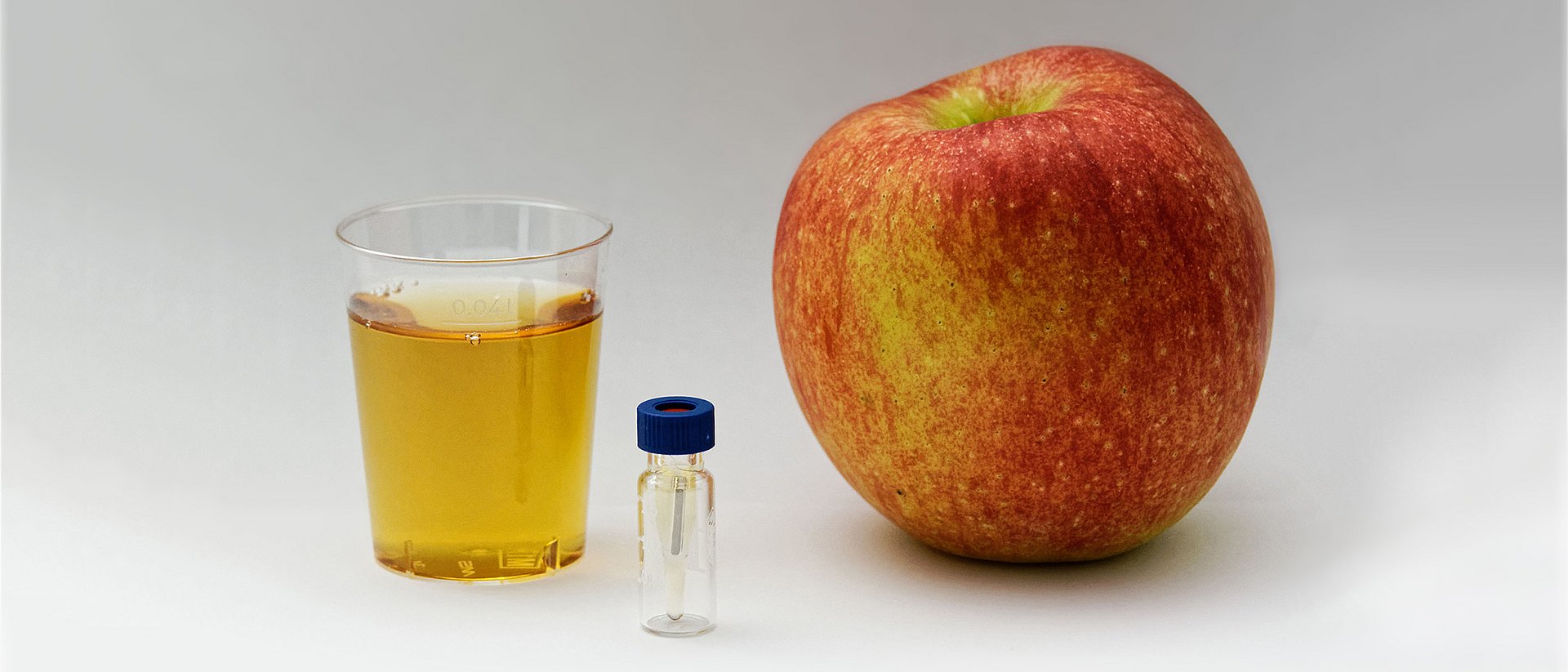Food profilers develop new methodological approach for food analysis
Better food quality control

Whether a food tastes good or not is essentially determined by the interaction of odors and tastants. A few trillionths of a gram per kilogram of food is enough to perceive some odorants. Tastants, on the other hand, we only recognize at significantly higher concentrations.
In order to guarantee consistent sensory quality, it is very important for manufacturers to know and control the characteristic odor and taste profiles of their products from the raw material to the finished product. This requires a fast but precise food analysis.
Tastants and aroma substances, however, differ greatly in their chemical and physical properties. As a result, food chemists currently use very different methods to determine the exact nature and quantity of odorants and tastants in a raw material or food. Especially aroma analyses are very time-consuming and therefore expensive. This limits the high-throughput analysis of numerous samples.
Ein methodischer Ansatz für zwei unterschiedliche Stoffklassen
„Um Lebensmittel zukünftig in einem zeitsparenden Hochdurchsatzverfahren sowohl auf Geruchs- als auf Geschmacksstoffe untersuchen zu können, haben wir nun eine neue innovative Methodik entwickelt“, erklärt Thomas Hofmann, Direktor des Leibniz-Instituts für Lebensmittel-Systembiologie und Professor für Lebensmittelchemie und molekulare Sensorik an der TU München. Sie basiert auf einem normalerweise für die Geschmacksstoffanalytik verwendeten Ultrahochleistungs-Flüssigkeitschromatographie-Massenspektrometrie-Verfahren (UHPLC-MS).
Neu und zeitsparend an dem entwickelten Ansatz ist, dass sich durch einen vorgeschalteten Anreicherungs- beziehungsweise Stoffumwandlungsschritt auch flüchtige Geruchsstoffe mit dieser, sonst nicht für Aromastoffe verwendeten Methode analysieren lassen.
Apfelsaft als Testobjekt
„Wir haben unseren neuen methodischen Ansatz am Beispiel von Apfelsaft getestet. Die Ergebnisse sind sehr vielversprechend“, sagt Andreas Dunkel, Senior Scientist am Leibniz-Institut für Lebensmittel-Systembiologie. Zusammen mit Doktorand Christoph Hofstetter von der TUM war er maßgeblich an der Neuentwicklung beteiligt.
Die neue Methode erlaube es nach Aussage der Wissenschaftler erstmals, eine große Probenanzahl in sehr kurzer Zeit hinsichtlich ihrer geschmacks- und geruchsgebenden Inhaltsstoffe zu analysieren.
Auch für Foodprofiling geeignet
Die Forscher hoffen, die Methode soweit weiterentwickeln zu können, dass sie künftig von Lebensmittelherstellern genutzt werden kann, um entlang der gesamten Wertschöpfungskette den Geschmack von Nahrungsmitteln schnell und einfach zu überwachen und gegebenenfalls zu optimieren.
Nicht zuletzt ließe sich das neue Verfahren auch nutzen, um Lebensmittelfälschern das Handwerk zu legen. „Anhand der identifizierten Inhaltstoffmuster könnte man Herkunfts- und Qualitätsangaben der Hersteller gut überprüfen und Fälschungen aufdecken“, sagt Foodprofiler und Lebensmittelchemiker Andreas Dunkel.

Christoph Konrad Hofstetter, Andreas Dunkel and Thomas Hofmann:
Unified Flavor Quantitation: Toward High-Throughput Analysis of Key Food Odorants and Tastants by Means of Ultra-High-Performance Liquid Chromatography Tandem Mass Spectrometry
J. Agric. Food Chem., 9. Juli 2019 – DOI: 10.1021/acs.jafc.9b03466
The scientific project was carried out within the framework of the "enable" competence cluster of nutrition research funded by the Federal Ministry of Education and Research of Germany (BMBF). Its aim is to develop new strategies that promote healthy eating behavior in society. This contributes significantly to the prevention of common diseases such as type 2 diabetes, cardiovascular diseases, certain types of cancer and obesity. This also includes well-controlled, tasty foods that support healthy eating habits.
Technische Universität München
Corporate Communications Center
- Dr. Andreas Battenberg
- battenberg@zv.tum.de
- presse@tum.de
- Teamwebsite
Kontakte zum Artikel:
Prof. Dr. Thomas Hofmann
Chair of Food Chemistry and Molecular Sensory Science
Leibniz-Institute for Food Systems Biology at TUM
thomas.hofmann@tum.de
+49 (8161) 71-2902
Andreas Dunkel
Leibniz-Institute for Food Systems Biology at TUM
Lise-Meitner-Str. 34, 85354 Freising
a.dunkel.leibniz-lsb@tum.de
+49 (8161) 71-2903
